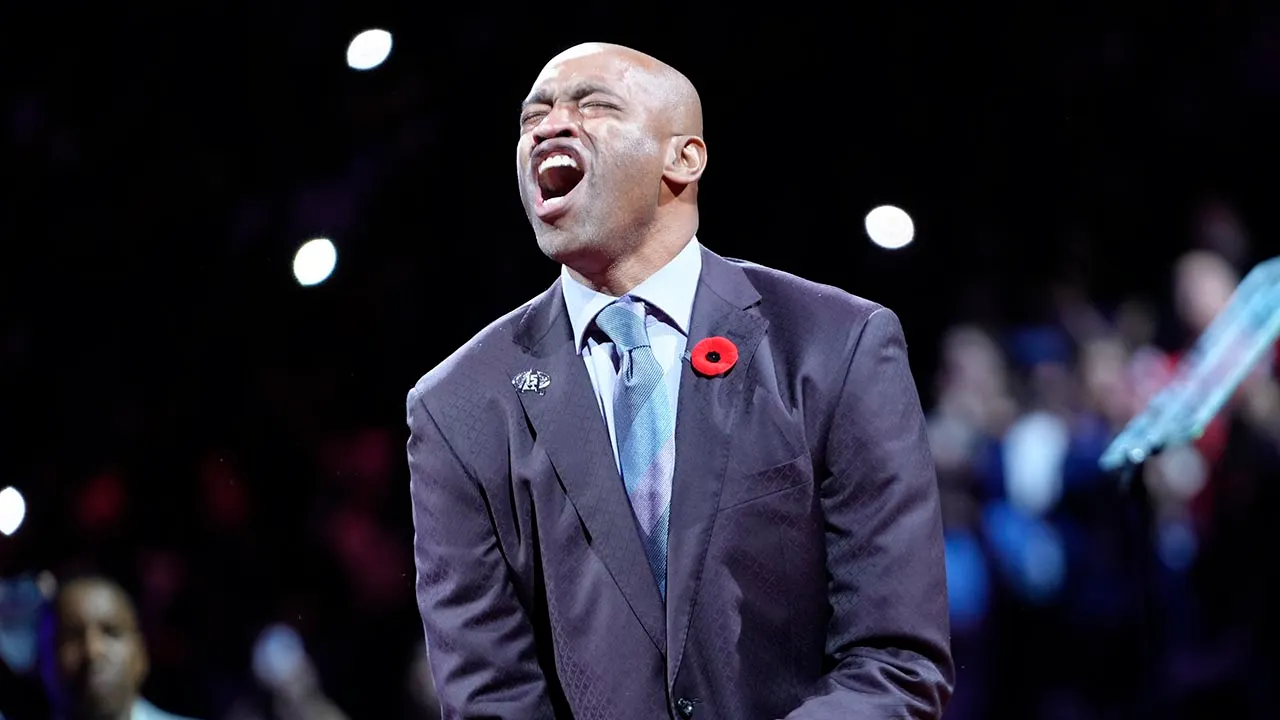“Fire” was widely hailed (including by me) as a success, not least of all for its boundary-bending music. Blanchard constructed his orchestration to mirror the restless internal life of his subject (the opera is based on the 2014 memoir by New York Times columnist Charles M. Blow), embedding a tempestuous jazz rhythm section into the core of the orchestra.
The resultant thread of jazz that weaves through the music doesn’t just tether Charles in his manhood to the haunting traumas of his boyhood, it allows Blanchard to vividly paint the opera’s dreamlike progression. Though, like most dreams, I struggled to remember its details once I left the hall. (A single performance remains in the current run of “Fire” at the Met on May 2.)
So it was a welcome opportunity at Strathmore on Friday to hear the opera (or large swaths of it) in the more concentrated, focused form of “Fire Shut Up in My Bones: Opera Suite in Concert,” co-presented by Strathmore and Washington Performing Arts.
For this reduced but refined vision of the score, Blanchard combined the forces of his own five-piece E-Collective ensemble (including Blanchard on trumpet) with David Balakrishnan’s Turtle Island Quartet. A suite of arias from the opera were sung by baritone and most recent Marian Anderson Vocal Award winner Justin Austin, and the powerful soprano Adrienne Danrich.
Blanchard opened with two selections from “Absence,” his most recent album with the E-Collective and Turtle Island Quartet, recorded in tribute to the late saxophonist and composer Wayne Shorter. It was a bracing introduction to his band — guitarist Charles Altura, pianist Taylor Eigsti, bassist Dale Black Jr. (filling in for David Ginyard Jr.) and longtime Blanchard collaborator, drummer Oscar Seaton Jr.
This opening gambit also introduced the lone issue that would haunt the evening — the sound itself. The onstage mix of acoustic and amplified instruments necessitated the use of microphones, and the muddled mix was often a betrayal of Strathmore’s usually pristine acoustics. The full drum kit and the (albeit pleasing) bass often swallowed the Turtle Island players whole, lending unintentional novelty to their sporadic emergences from the din (like the staccato passages that bookend “I Dare You.” And the singers — both powerhouses with no need of help from the sound system — had to put in some visible work to mitigate the mix.
When balance was achieved onstage, Blanchard’s band hit hard. Altura’s solos were lithe, tasteful and tasty and Seaton’s drumming was explosively expressive (even taking to the hardware now and then). Blanchard’s trumpet — run through a line of effects — left behind a comet trail of delay, its sound seeming to double itself. These opening jams bordered on psychedelic (an effect aided by large projections of vibrant abstractions by artist Andrew F. Scott), but the trip felt soundly mapped. (Another album track, “Chaos,” served as an unofficial encore and energizing send-off at the evening’s close.)
After this, the Turtle Island players — Balakrishnan and Gabriel Terracciano on violins, Benjamin von Gutzeit on viola and Naseem Alatrash on cello — ushered in the “Fire” suite, beautifully concentrating a tangle of anguished themes before Austin’s striking opening aria, “Tears of Anger and Shame.” It’s not an easy one — Charles comes in hot, and so must the singer. Austin knows how to balance force and frailty in his voice to bold dramatic effect, without ever sacrificing his careful control.
His counterpart, the soprano Adrienne Danrich, was the standout performance of the evening, a singer of unusual might. She inhabited multiple characters, capturing the love and loss of motherhood for bookend arias as Charles’s mother, Billie, embodying the growing apprehensions of his short-term lover Greta, and bringing exquisite sensitivity (and titular fire) to the opera’s magnificent centerpiece, “Peculiar Grace.”
Musically, the suite is cleverly orchestrated and arranged, with casually seamless transitions guiding one aria into the next, and themes granted more intimate articulation across the combined ensembles.
But perhaps the most pronounced effect of this new arrangement is the way it showcases Blanchard’s facility not only with emotional extremes, but also with the charged ambivalence between them — so crucial to understanding Charles as he moves between the magnetic fields of identity.
Onstage, Blanchard is most clearly doing his respective thing when trailing behind his trumpet, his searing lines suggesting something between authorship and abandon. But the “Fire” suite reveals the composer’s emotional acumen and hotblooded humanity. It’s a fire that burns brighter each time I hear it.














































